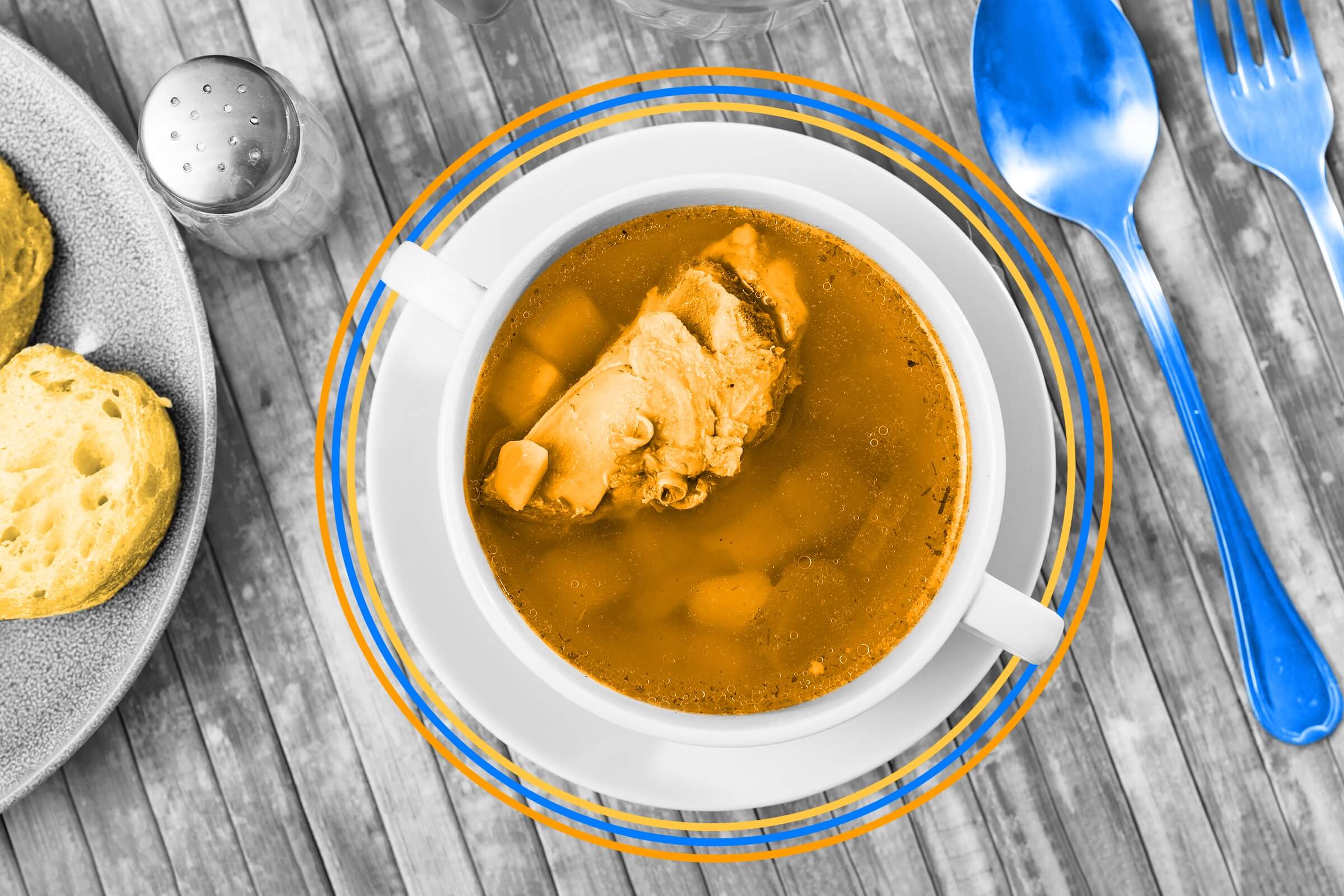
The word “restaurant” literally means “food that restores” and once referred to broths.
French cuisine is often considered the epitome of fine dining, and that could be because French cooks are said to have launched the modern restaurant — and even invented the word “restaurant” itself. Many etymologists and historians attribute the origins of both to A. Boulanger, a Parisian soup vendor who set up shop in 1765. Boulanger peddled bouillons restaurants — so-called restorative meat and vegetable broths, from the French restaurer, “to restore or refresh” — an act that wasn’t entirely revolutionary, since other cooks were selling healing soups from “health houses” around the same time. But Boulanger’s approach was different because he also offered a menu of other meals at a time when most taverns and vendors served just one option, dictated by the chef. Boulanger’s concept of seating guests and allowing them to choose their desired meal exploded in popularity after the French Revolution at the end of the 18th century, as kitchen workers who formerly served aristocratic households set up their own dining rooms or joined new eateries. By 1804, French diners could choose from more than 500 restaurants across the country.
Some historians disagree with this long-told tale of the restaurant’s origin, suggesting there isn’t much evidence by way of historical documentation to prove Boulanger was a real person. And others believe attributing the public dining room to French ingenuity isn’t wholly accurate, since humans have been offering up their cooking talent to the hungry masses for millennia. Take, for example, how Chinese chefs in major cities such as Kaifeng and Hangzhou customized menus to appeal to traveling businessmen looking for familiar meals nearly 700 years before France’s iteration of the restaurant. Or the excavated ruins at Pompeii dating to 79 CE that include ornately decorated food stalls called thermopolia, where hungry Romans could choose from a variety of ready-to-eat dishes. Though the names have differed, smart humans have been selling snacks to each other for a long, long time.
Most of the diners Americans patronize today are stationary spots, but the country’s earliest greasy spoons were more like modern food trucks. First called “night lunch wagons” by Rhode Island inventor Walter Scott in 1872, the horse-drawn diners served hot meals to patrons who were often late-shift workers or partiers looking for meals long after other restaurants had closed. Soon after, ingenious restaurateurs developed rolling eateries complete with seats, some providing both a meal and transportation to hungry diners looking to travel across town. By the 1890s, trains began incorporating the concept (ticket holders were previously responsible for supplying their own meals), debuting dining cars that fed patrons on long journeys across the growing West. The original dining carriages, however, quickly fell out of style; maintenance costs, city bans, and competition from brick-and-mortar restaurants pushed many proprietors out of business by the early 1900s. Those that survived swapped their carts for permanent locations often resembling their original carts or made from modified railroad dining cars — an iconic look that remains today.

